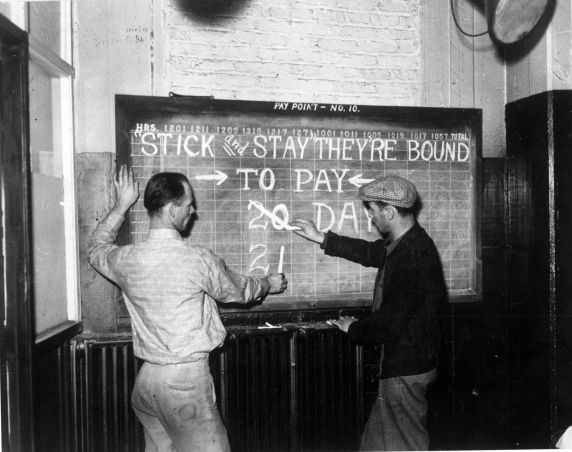Tired of reductions in pay and jobs, increased workloads, and harassment of United Automobile Workers organizers, on December 30, 1936 automotive workers in the General Motors Fisher Number One Plant in Flint, Michigan sat down on the job. For the next 44 days workers refused to work or leave the Fisher One and Two plants, and later Chevrolet Number 4. Michigan Governor Frank Murphy refused to order the strikers out, so GM attempted to expel them by shutting off the plants’ heat and electricity and by preventing food deliveries. After violent clashes between strikers, the police, and “goons” hired by GM, Murphy called in the U.S. National Guard to keep the peace outside the plant. Strikers’ female relatives started the Women’s Emergency Brigade to organize protests and to bring food and supplies to the strikers. Children walked the picket line outside. With its automobile production almost crippled, on February 11, 1937 GM reached a temporary agreement with the UAW and ended the most famous labor strike in American history.
Learn more about the Flint Sit-down at the Walter P. Reuther Library.

